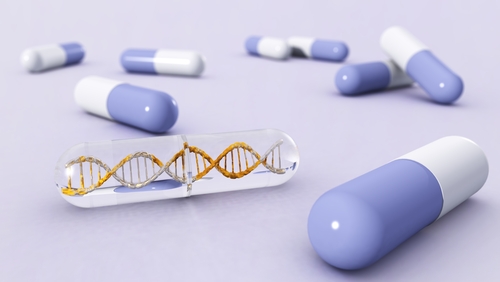Experimental Lucerastat Suitable for All Types of Fabry Disease Patients, Study Shows

Lucerastat, an investigative oral therapy currently in late-stage clinical development at Idorsia Pharmaceuticals, successfully reduced the accumulation of a type of fat associated with disease worsening in cells from patients with Fabry disease.
Researchers believe this medication is suitable for all Fabry patients regardless of their genetic background, and are hoping to confirm these results in an ongoing Phase 3 clinical trial.
Their study, “Glucosylceramide synthase inhibition with lucerastat lowers globotriaosylceramide and lysosome staining in cultured fibroblasts from Fabry patients with different mutation types,” was published in Human Molecular Genetics.
Fabry disease is a a rare genetic disorder caused by mutations in the GLA gene — located in the X chromosome — that encodes for an enzyme called alpha-galactosidase A. These mutations usually render the enzyme nonfunctional, although in mild cases of the disease, alpha-galactosidase A may still function to some degree.
Alpha-galactosidase A is usually found in lysosomes — small structures within cells that accumulate, digest, and recycle materials — where it breaks down a type of fat called globotriaosylceramide (Gb3) as part of the normal recycling of old red blood cells and other types of cells.
When mutations affect the function of alpha-galactosidase A, GB3 accumulates inside lysosomes, causing damage to the cells. As the disease worsens, this damage can extend to several organs and give rise to a series of life-threatening conditions, such as heart attack, stroke, and kidney disease.
Approved treatments to treat Fabry disease include enzyme replacement therapies, such as Fabrazyme, and oral therapies like migalastat. However, migalastat is suitable only for patients with what are known as amenable mutations, representing between 35 and 50 percent of people with Fabry disease.
Lucerastat has shown promising results in preclinical studies and is now being tested as a monotherapy in an ongoing Phase 3 trial (NCT03425539) in patients with several genetic backgrounds.
Glucosylceramide synthase is another enzyme which plays a role in the production of Gb3.
Researchers tested the ability of lucerastat to lower Gb3 and globotriaosylsphingosine — another fat molecule that accumulates inside lysosomes and is considered a hallmark of Fabry disease — in fibroblasts (skin cells) from 15 Fabry patients.
Patients’ cells included 13 different GLA mutations associated with classic symptoms of the disease. The effectiveness of lucerastat was compared to other treatments currently used in the clinic, including agalsidase alfa and migalastat.
Lucerastat reduced the accumulation of Gb3 and lysosome volume in all cell lines in a dose-dependent manner. These effects were comparable to those obtained with agalsidase alfa and migalastat.
“The data described here supports the use of lucerastat in Fabry patients with different genotypes, suggesting that it could be the first oral therapy suitable for all Fabry patients irrespective of the underlying mutation,” the researchers wrote.
“An ongoing Phase 3 clinical trial of lucerastat in Fabry patients will assess whether the presented results translate to reductions in Gb3 and ultimately in neuropathic pain,” they added.






